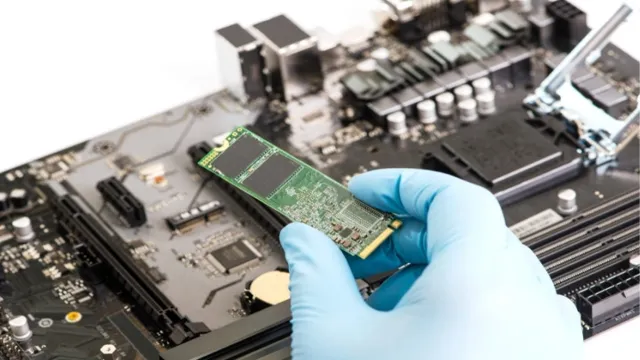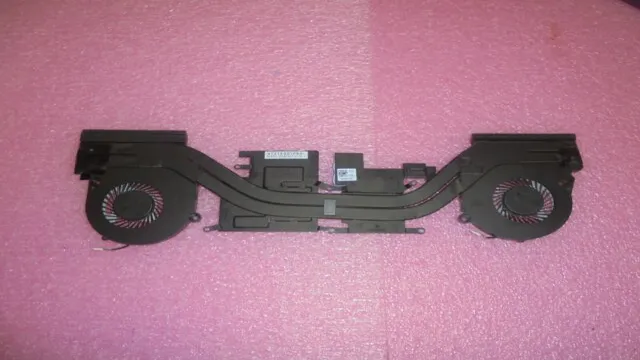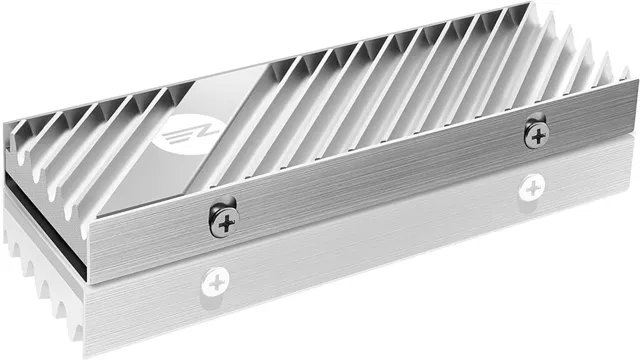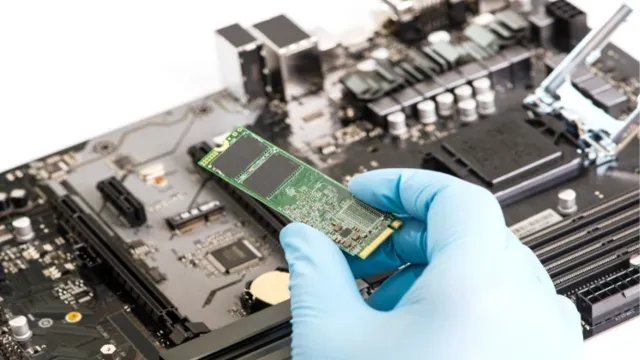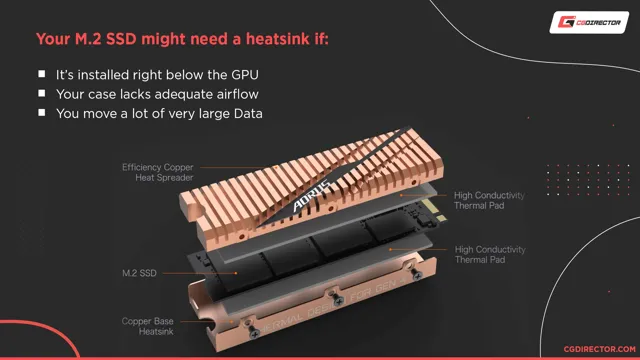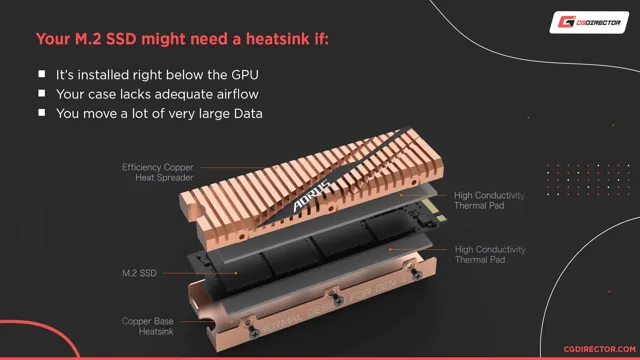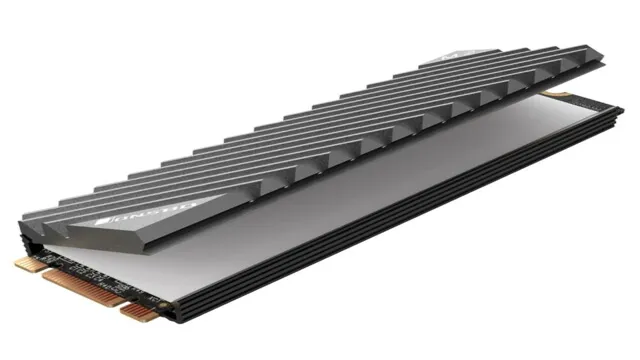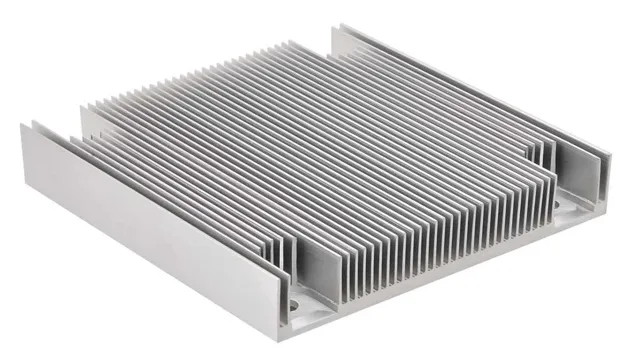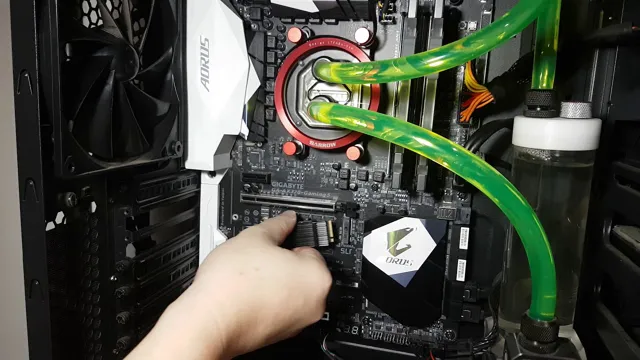Do you ever feel like your laptop’s performance has slowed down over time? It’s a common problem for many laptop users, but luckily there’s a simple solution that can help maximize your laptop’s performance – an SSD heatsink. An SSD heatsink is a small piece of hardware that attaches to your laptop’s SSD (solid-state drive) and helps dissipate heat away from the drive. This can lead to better performance and longer lifespan for your SSD, as heat is one of the main causes of SSD failure.
Think of it like a car’s engine – when your engine overheats, it can’t perform at its best and may even break down. The same goes for your laptop’s SSD – when it gets too hot, it can’t perform at its best and may even fail. By adding an SSD heatsink, you’re essentially putting a cooling system in place for your laptop’s SSD, helping it perform at its optimal capacity.
So if you’ve noticed your laptop’s performance slowing down, consider adding an SSD heatsink to help maximize its performance and lifespan. It’s a simple and affordable solution that can make all the difference in the world.
Why Upgrade To An SSD Heatsink?
Upgrading to an SSD heatsink can be a game-changer for your laptop’s performance. If you have an SSD installed, you might have noticed that it can get quite hot, which can lead to slower performance over time. This is where an SSD heatsink comes in.
It is installed on top of your SSD and helps to dissipate the heat generated by your SSD. By doing so, it enables your SSD to perform at its optimum capacity consistently. This will ensure that your laptop runs smoothly and efficiently, even when you’re performing resource-intensive tasks like video editing or gaming.
If you’re looking to upgrade your laptop’s performance, installing an SSD heatsink is an affordable and easy solution that can make a significant difference. So, if you’re wondering why you should upgrade to an SSD heatsink, the answer is simple: it will help to keep your laptop cool, ensuring that your SSD can perform at its highest capacity consistently.
Reduce Heat Buildup
If you’re looking to upgrade your computer system, adding an SSD heatsink can greatly improve your overall performance. The primary purpose of an SSD heatsink is to reduce heat buildup, which is one of the most common causes of system slowdowns. When your computer overheats, it can lead to hardware damage and even system failure.
SSD heatsinks work by absorbing and dissipating the heat generated by your SSD. This results in improved performance and longevity of your hardware. Additionally, upgrading to an SSD heatsink can also help increase your computer’s overall lifespan.
So, if you’re looking to improve your computer’s performance and protect your hardware from damage, an SSD heatsink is definitely worth considering.
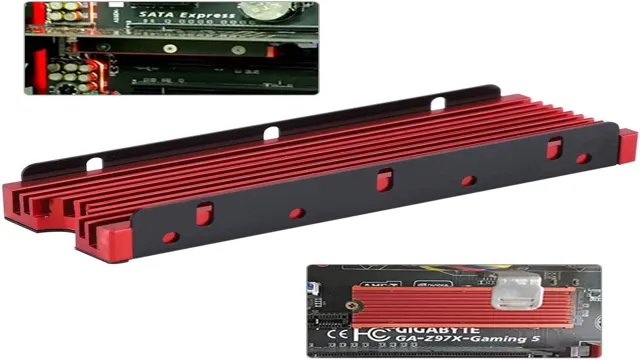
Increase Laptop Cooling Efficiency
If you’re a heavy laptop user, chances are you know how quickly things can heat up. This is especially true if you’re running many programs at once or working with large files. One way to increase your laptop’s cooling efficiency is to upgrade to an SSD heatsink.
SSDs, or solid-state drives, are known for their low power consumption and high performance. But did you know they also produce less heat than traditional hard drives? By adding a heatsink to your SSD, you can help dissipate some of the heat generated by your laptop’s other components. This can lead to overall better performance and longer lifespan for your device.
So why not make the switch? Upgrade to an SSD with a heatsink and keep your laptop cool and running smoothly for years to come.
Improves Laptop Lifespan
Upgrading to an SSD heatsink can significantly improve the lifespan of your laptop. SSDs, or solid-state drives, are more durable and reliable than traditional hard drives because they have no moving parts. Therefore, they are less susceptible to physical damage and can withstand more wear and tear over time.
Additionally, an SSD heatsink can help dissipate heat and keep your laptop cooler during prolonged use, which can also extend its lifespan. Investing in an SSD heatsink is a smart decision if you want to keep your laptop running smoothly for years to come. So, why not consider upgrading to an SSD heatsink and enjoy faster and more reliable performance from your laptop?
Choosing The Right SSD Heatsink
If you’re looking to upgrade your laptop’s SSD, it’s important to choose the right heatsink to ensure your drive stays cool and operates efficiently. A laptop SSD heatsink is a small but crucial component that helps dissipate heat from your solid-state drive and prevent it from overheating. When selecting a heatsink, it’s important to consider factors such as the size and shape of your SSD, the amount of space available in your laptop, and the type of interface your SSD uses.
Some popular options for laptop SSD heatsinks include aluminum heatsinks, copper heatsinks, and heatsinks with fans. Ultimately, the right choice will depend on your specific needs and budget. By taking the time to research and choose the best heatsink for your laptop SSD, you can extend the lifespan of your drive and enjoy faster and more reliable performance.
Compatibility With Laptop Model
When upgrading your laptop’s storage, it’s essential to choose the right SSD heatsink that’s compatible with your laptop model. Compatibility is crucial because not all heatsinks are created equal, and some may be designed specifically for certain laptop models. You don’t want to end up wasting money on a heatsink that doesn’t fit your laptop or perform optimally.
To ensure compatibility, you should check the specifications of your laptop and the heatsink you’re interested in purchasing. Make sure to check the dimensions, mounting mechanism, and compatibility with your laptop’s internal hardware. You can also consult with a professional or do some research online to find out which SSD heatsinks are compatible with your specific laptop model.
Additionally, reading reviews from other customers who have purchased and used the same heatsink can give you insight into its compatibility and overall performance. In summary, it’s crucial to choose a compatible SSD heatsink when upgrading your laptop’s storage. Doing so will ensure that you get the most out of your investment and prevent any potential compatibility issues.
Do your due diligence and research before purchasing, and you’ll be sure to find the right heatsink for your needs.
Size And Material
Choosing the right SSD heatsink is crucial in reducing the heat generated by your SSD system and improving its performance. Two important factors to consider are the size and material of the heatsink. The size of the heatsink should match your SSD’s dimensions to properly dissipate the heat.
Consider purchasing a larger heatsink if the size of your SSD is not standard. Material is also important- copper heatsinks are typically more effective than aluminum ones due to their superior thermal conductivity. However, copper is also more expensive.
Ultimately, the right SSD heatsink for you will depend on your budget, the size of your SSD, and the materials available within that budget. Keep these factors in mind and choose a quality heatsink to improve the performance and lifespan of your SSD.
Price Point
When it comes to choosing the right SSD heatsink, price point is definitely a factor to consider. While it might be tempting to go for the cheapest option, it’s important to remember that a high-quality heatsink can make a big difference in the longevity and performance of your SSD. That being said, there are plenty of affordable options out there that still offer excellent cooling capabilities.
It’s all about finding a balance between cost and effectiveness. Think of it like buying a car – you don’t want to go for the most expensive option just because it’s flashy, but you also don’t want to sacrifice quality for a lower price. Do your research and invest in a heatsink that fits your budget and your performance needs.
Installation Tips And Tricks
If you’re upgrading your laptop’s storage by installing an SSD, it’s important to consider the thermal management of your system. A laptop SSD heatsink can help dissipate the heat generated by the drive and prevent thermal throttling, which can slow down performance or even damage the drive. When installing an SSD heatsink, make sure to remove any existing thermal pads or adhesive from the drive and clean it thoroughly with isopropyl alcohol.
Apply a new layer of thermal paste to the drive and attach the heatsink firmly, making sure it has good contact with the drive’s surface. Avoid over-tightening the screws, as this can damage the drive or heatsink. With a properly installed SSD heatsink, you can enjoy faster and more reliable storage performance without worrying about overheating issues.
Don’t forget to search for quality products using the main keyword “laptop SSD heatsink” to ensure that you find a compatible solution for your laptop.
Preparation And Equipment Needed
When it comes to installing equipment, preparation is key. Make sure you have all the necessary tools and materials before getting started. This includes things like screws, bolts, wire cutters, and safety equipment such as gloves and goggles.
It’s important to read through any instruction manuals or guides before getting started, so you understand the process and feel confident in your abilities. When you have everything ready, begin by laying out all your materials and sorting them by task. This will help you stay organized and avoid losing any important pieces.
When it comes to the actual installation process, there are a few tips and tricks that can help you get the job done efficiently and properly. One important thing to keep in mind is to always follow the instructions carefully. Even if you think you know what you’re doing, it’s always best to double-check and make sure you’re doing everything correctly.
Use a level to ensure that your equipment is installed straight and evenly. When drilling into walls, start with a small drill bit and work your way up to the desired size to prevent any damage. And always make sure to use safety equipment and exercise caution when working with tools and equipment.
In summary, preparation and attention to detail are crucial when it comes to installing equipment. Make sure you have all the necessary tools and materials, read through instruction manuals, and stay organized throughout the process. And remember to follow instructions carefully, use a level, start with a small drill bit, and prioritize safety at all times.
These tips and tricks will help you achieve a successful installation.
Step-By-Step Guide to Installation
Installing anything can be stressful, but with these easy tips and tricks, it’ll go much smoother than you think. Firstly, make sure to read the instructions through thoroughly before starting. This ensures that you have all the necessary tools and pieces needed and that you understand what needs to happen.
Secondly, take your time and don’t rush. Installing anything quickly may result in it not being installed properly, which can cause issues later on. Thirdly, ask for help if needed.
If you’re unsure of what you’re doing or need an extra pair of hands, reach out to someone for assistance. Lastly, always test the installation before assuming it’s finished. It’s better to be safe than sorry! With these tips, installing anything should be a breeze.
Conclusion: Boost Laptop Performance With An SSD Heatsink
In the world of technology, speed is a crucial factor in ensuring optimal performance. The introduction of the laptop SSD heatsink has revolutionized the way we handle heat dissipation, allowing us to harness the full potential of our systems. With its sleek design and innovative cooling mechanism, the laptop SSD heatsink has brought forth a new era of efficiency and functionality.
So, if you’re looking for a game-changing technology that delivers on both form and function, the laptop SSD heatsink is the way to go. Don’t settle for slow performance – invest in a top-notch heatsink and let your laptop soar to new heights!”
FAQs
What is a laptop SSD heatsink?
A laptop SSD heatsink is a device that is designed to dissipate heat generated by a solid-state drive (SSD) in a laptop. It helps to prevent overheating of the drive, which can cause damage or a decrease in performance.
How does a laptop SSD heatsink work?
A laptop SSD heatsink works by providing an additional path for heat to escape from the solid-state drive. It is typically made of a heat-conductive material, like aluminum or copper, which quickly absorbs and transfers the heat away from the drive.
Are laptop SSD heatsinks necessary?
While some laptops may not require a heatsink for their SSDs, it is generally recommended to use one to help prevent heat buildup and ensure optimal performance. SSDs can generate a significant amount of heat, especially during heavy use, and a heatsink can help keep the temperature under control.
Can I install a laptop SSD heatsink myself?
In most cases, installing a laptop SSD heatsink is a relatively simple process that can be done by anyone with basic technical skills. However, it is recommended to follow the manufacturer’s instructions carefully and use proper tools to avoid damaging the drive or laptop.
